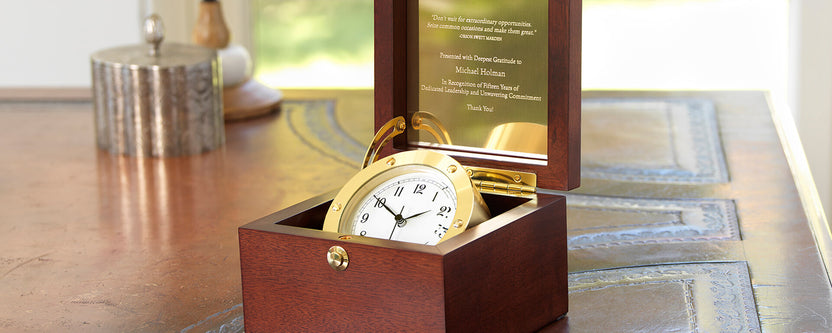S-Town Podcast Brings Horology into the Spotlight
More than five years after the release of "S-Town," we're still fascinated with this suspenseful podcast. This seven-part thriller from the creators of "This American Life"and "Serial" (both binge-worthy in their own right) was released in March 2017 to much acclaim. Even now, the master clockmakers at Chelsea Clock are hooked on how it uses real-life horology and antique clocks as the basis for a captivating investigative tale.
The series features seven hour-long episodes which follow the mysteries and curiosities (and at times, tragedies) of John B. McLemore, a horologist who repaired antique clocks for a living in rural Alabama. What initially begins as a reporter looking into a possible murder cover-up eventually involves an additional death, feuds, hidden treasures and more-all through the framework of antique clocks and the secrets they hold.
What Is Horology?
Horology literally means "the study of time." More broadly, it refers to studying the measurement of time along with the instruments used to measure it, including clocks, watches, marine chronometers, atomic clocks and even classic sundials. A horologist like McLemore is a person interested in studying time. Because of their vast antique clock knowledge, many horologists also make and repair clocks.
In the case of John B. McLemore, who was one of the world's most skilled clock restorers, his intricate professional work fixing rare clocks is a metaphor for the larger story. Furthermore, the clocks are part of the man's legacy; podcast host and executive producer Brian Reed attempts to unravel the mysteries within McLemore's town in the same way McLemore would solve the mystery of fixing an antique clock.
Reed spends much time discussing clock repair, along with topics such as how clocks are gilded and the history of sundials, all in hopes of better understanding the eccentric McLemore and why he summoned him to the small Alabama town in the first place. You can view some of the clocks that John worked on and owned by visiting the "S-Town" podcast Instagram page.
Origins of the "S-Town" Podcast
Reed says the roots of "S-Town" date back to 2012, when McLemore sent him an unsolicited email with the subject line, "John B. McLemore lives in Sh*&town, Alabama" (although the actual subject line was uncensored). There had been a murder in his town, and he was convinced it had been covered up. He was asking the producers of "This American Life" to come out and help investigate. After multiple correspondences, Reed decided to take McLemore up on his proposal.
"When Reed ventures to McLemore's sprawling ancestral property and its environs, in Woodstock, Alabama, the murder mystery proves stubborn and elusive," writes Sara Larson for The New Yorker. "At one point, Reed finds himself standing with McLemore inside a hedge maze that he's designed and had built on his land, and they're both wondering how to get out. Such framing about clocks and mazes is palpably deliberate-right from the beginning, 'S-Town' wants to reassure you that meanderings and muddles are part of the design."
The Mysteries of Clock Repair
"When an antique clock breaks-a clock that's been telling time for two-hundred or three-hundred years-fixing it can be a real puzzle," Reed says in the opening episode of "S-Town." "An old clock like that was handmade by someone: it might tick away the time with a pendulum, with a spring, with a pulley system; it might have bells that are supposed to strike the hour, or a bird that's meant to pop out and cuckoo at you. There can be hundreds of tiny individual pieces, each of which needs to interact with the others precisely. To make the job even trickier, you often can't tell what's been done to a clock over hundreds of years. Maybe there's damage that was never fixed or fixed badly. Sometimes entire portions of the original clockwork are missing, but you can't know for sure; a clock that old doesn't come with a manual. So instead, the few people left in the world who know how to do this kind of thing rely on what are often called 'witness marks' to guide their way. A witness mark could be a small dent, a hole that once held a screw: These are actual impressions and dent lines and discolorations left inside the clock of pieces that may have once been there. They are clues as to what was in the clockmaker's mind when he first created the thing. I'm told fixing an old clock can be maddening. You're constantly wondering if you've just spent hours going down a path that will likely take you nowhere, and all you've got are these vague witness marks which might not even mean what you think they mean."
After this compelling introduction to the art of clock repair (which we love since we can relate so well), Reed introduces McLemore, and the mystery of the podcast, and of John McLemore himself, begins to unfold. Listen to chapter 1 below and let us know what you think!








